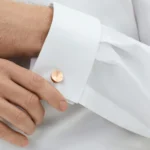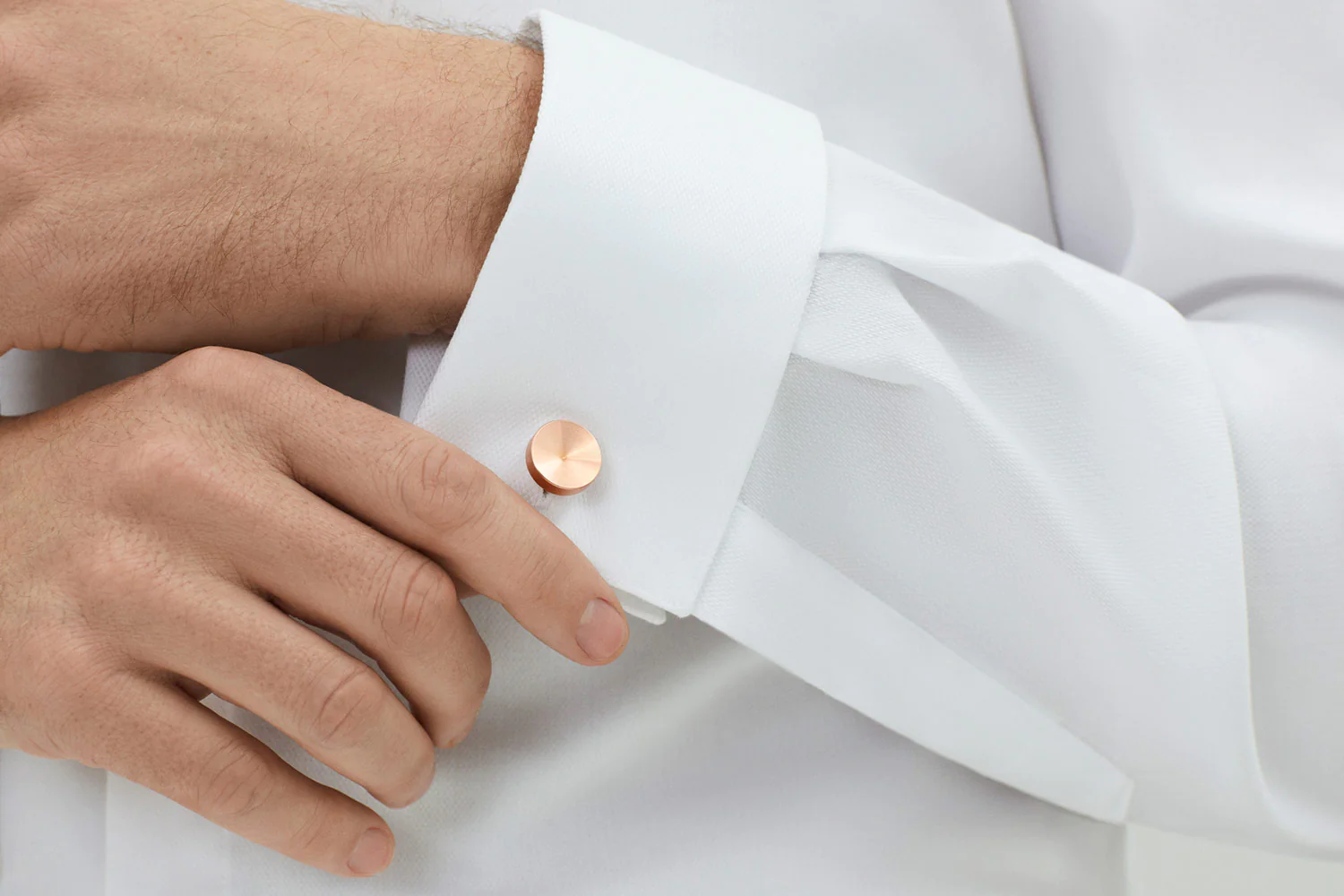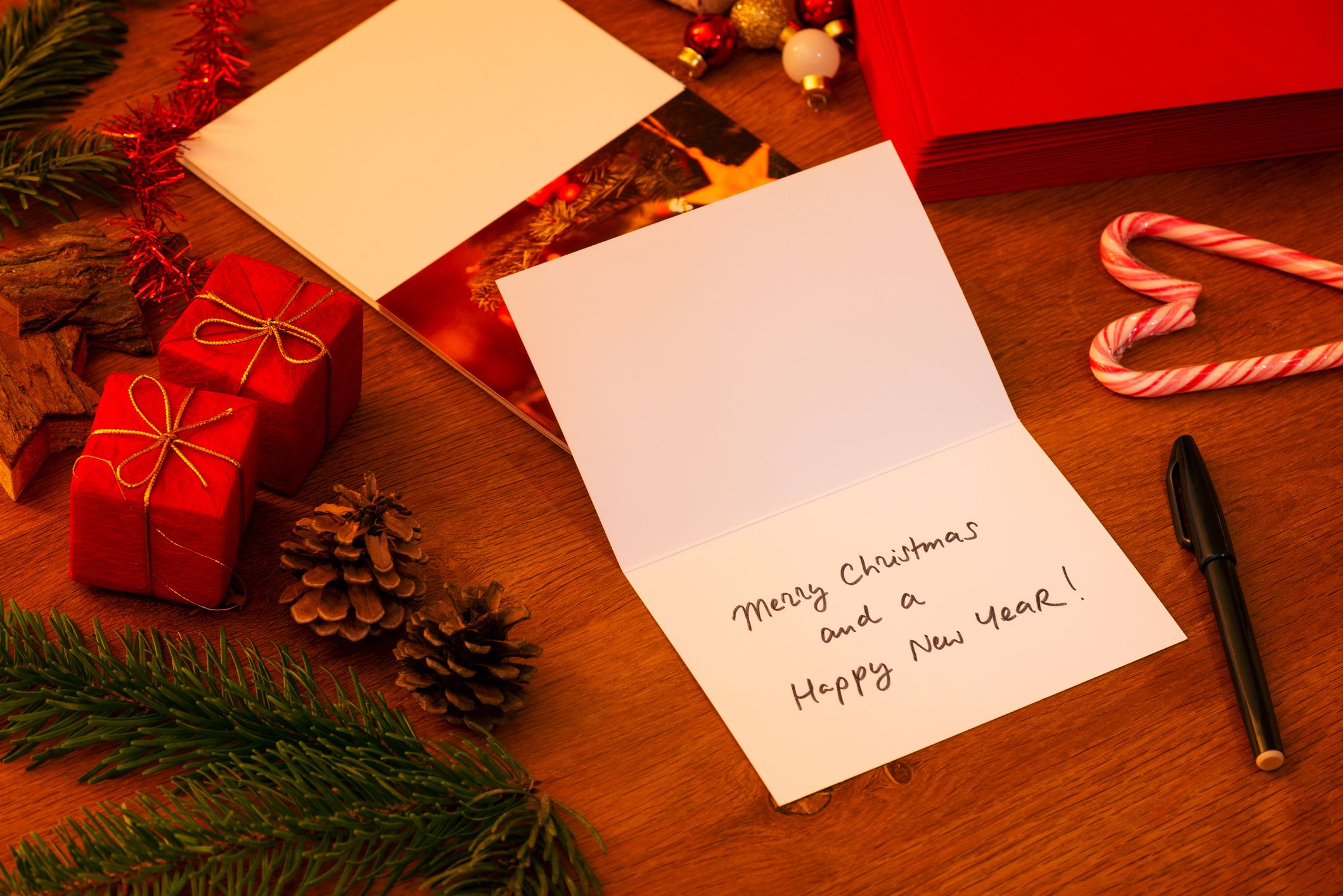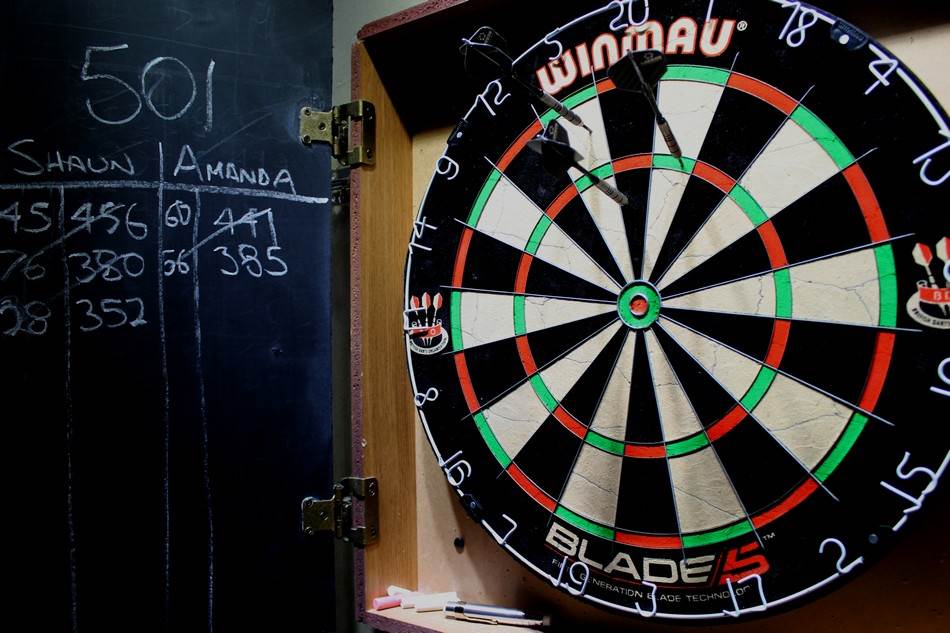Yes, you can add cufflinks to any shirt that has the appropriate cuff style. Specifically, shirts with French cuffs or convertible cuffs are designed to accommodate cufflinks. French cuffs are longer and meant to be folded back, secured with cufflinks. Convertible cuffs, on the other hand, have both buttonholes and buttons, offering the flexibility to use either cufflinks or buttons.
However, shirts with barrel cuffs, the most common style, typically lack the necessary buttonholes for cufflinks. So, while many shirts can indeed be paired with cufflinks, it’s essential to check for the suitable cuff style to ensure a proper fit.
What Are Cufflinks?

Cufflinks are decorative fasteners used to secure the cuffs of dress shirts. They replace traditional button closures and are designed to add a touch of elegance and style to a man’s formal attire.
Cufflinks typically consist of two distinct ends, often decorative, connected by a post and toggle mechanism. The decorative ends can vary widely in design, featuring materials like precious metals, gemstones, enamel, or intricate patterns.
The post, which goes through the cuff buttonholes, is fastened using a toggle or similar mechanism, ensuring a secure closure.
Different Types and Styles of Cufflinks
Bullet Back Cufflinks: Among the most prevalent types, bullet back cufflinks feature a cylindrical toggle mechanism that is flipped to secure the cuff. This design provides a straightforward and secure fastening method.
Whale Back Cufflinks: Similar to bullet back cufflinks but distinguished by a flat, whale tail-shaped toggle. This design is favored for its ease of use, allowing the wearer to secure the cuff with a simple flip.
Chain Link Cufflinks: Connected by a chain, these cufflinks offer more flexibility and movement. The chain allows for a looser fit, providing a distinctive appearance and enhancing comfort.
Stud or Button Style Cufflinks: These cufflinks feature simple, non-moving designs often used for formal occasions. The stud or button style provides a classic and timeless look, complementing a sophisticated dress shirt.
Different Shirt Cuff Styles
Barrel Cuffs
Barrel cuffs, the most common on dress shirts, are straightforward in design, featuring a cylindrical shape with one or two buttons for closure. This simplicity contributes to their versatility, making them suitable for both formal and casual wear. The clean lines of barrel cuffs provide a classic and timeless look.
French Cuffs (Double Cuffs)
French cuffs, or double cuffs, are longer cuffs folded back and secured with cufflinks. This style adds an extra layer to the cuff, exuding elegance and formality. French cuffs are synonymous with upscale occasions, such as black-tie events and weddings, making them a choice for those seeking a sophisticated appearance.
Convertible Cuffs
Combining the best of both worlds, convertible cuffs feature buttons like barrel cuffs but also include buttonholes, allowing for the use of cufflinks. This adaptability provides wearers with the flexibility to switch between a traditional buttoned look and a more refined appearance with cufflinks. Convertible cuffs cater to a range of styles and occasions.
Mitered Cuffs
Mitered cuffs set themselves apart with a diagonal or mitered edge, creating a distinctive and stylish finish. This design detail adds a touch of sophistication without being overtly flashy. Mitered cuffs are an excellent choice for those who appreciate subtle yet unique elements in their attire.
Compatibility of Cufflinks with Various Cuff Types
Barrel Cuffs
Barrel cuffs are primarily designed for buttons, lacking inherent features for cufflink use. However, contemporary designs may incorporate buttonholes, offering the option for cufflink enthusiasts to showcase their accessories.
French Cuffs (Double Cuffs)
French cuffs are expressly crafted for cufflinks. The longer length and folded-back style create a perfect canvas for showcasing various cufflink designs. This cuff type allows wearers to make a bold style statement with their chosen accessories.
Convertible Cuffs
As the name suggests, convertible cuffs provide the flexibility to be fastened with either buttons or cufflinks. This versatility makes them a practical choice for individuals who appreciate having options in their wardrobe, adapting to different looks and occasions.
Mitered Cuffs
Mitered cuffs may or may not have buttonholes for cufflinks, depending on the specific design of the shirt. Those with buttonholes offer the opportunity to incorporate cufflinks, elevating the overall aesthetic with a touch of individuality.
Which shirt characteristics suit cufflinks, and can they be worn casually?
Shirts with high-quality fabrics, such as fine cotton or silk, work well with cufflinks. These materials provide a smooth and structured surface, allowing cufflinks to sit elegantly without compromising the fabric’s integrity.
Shirts with French cuffs, specifically designed for cufflinks, are an obvious choice. The longer cuff length and the absence of button closures facilitate the secure and stylish use of cufflinks.
Some shirts, especially those with convertible cuffs, feature buttonholes alongside traditional buttons. This versatility allows wearers to opt for either buttons or cufflinks, providing adaptability for different occasions.
Shirts in neutral colors or subtle patterns offer versatility when pairing with various cufflink styles. These shirts provide a balanced canvas, allowing cufflinks to stand out without clashing with bold patterns or colors.
Formal vs. Casual Shirts and Cufflink Compatibility
Formal shirts, often with French cuffs, are inherently designed for cufflinks. These shirts prioritize elegance and sophistication, making them suitable for events like black-tie affairs, weddings, and formal business occasions.
Casual shirts with barrel cuffs or single cuffs may also feature buttonholes, accommodating cufflinks for those who want to add a touch of flair to their everyday casual wear. However, this is less common compared to formal shirts.
The choice between formal and casual shirts largely depends on the occasion. Formal shirts with cufflink compatibility are apt for upscale events, while casual shirts allow for a more relaxed approach to cufflink use.
Contemporary fashion blurs the lines between formal and casual, allowing for creative expressions. Some casual shirts with unique designs or high-quality fabrics may be suitable for cufflinks, especially as individuals seek to personalize their style.
How do you properly attach and wear cufflinks on shirts?
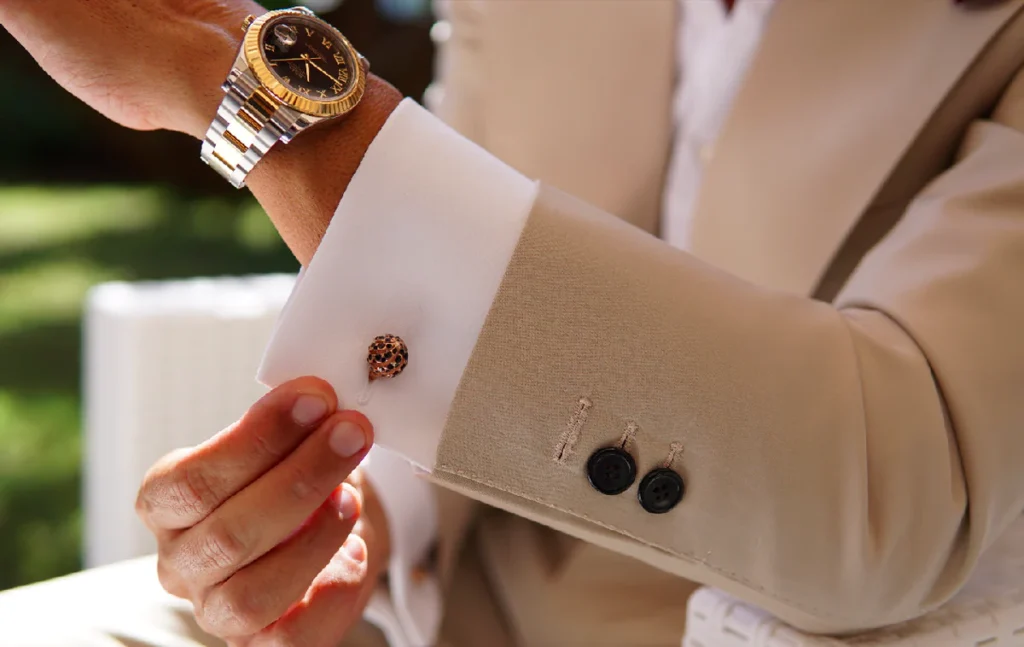
Prepare the Cuff: Before attaching cufflinks, ensure that your shirt is clean, well-pressed, and properly sized to avoid any discomfort.
Align the Holes: Lay the shirt flat on a stable surface and align the buttonholes on both sides of the cuff. Precise alignment is crucial for a neat and symmetrical appearance.
Insert the Cufflink: Hold the decorative end of the cufflink between your thumb and forefinger. Insert the post through the buttonholes, starting from the outside of the cuff and pushing through to the inside.
Secure the Toggle: Once the cufflink post is through, secure the toggle or closure mechanism. The type of closure may vary, including bullet backs, whale tails, or swivel bars. Also, follow the specific design of your cufflinks to secure them properly.
Double-Check: Confirm that the cufflink is securely fastened and sits flat against the cuff. Ensure that the decorative end is facing outward for visibility. Repeat the process for the other cuff to maintain symmetry.
Tips for Proper Wearing
Coordinate with Attire: Choose cufflinks that complement the style and color of your overall outfit. Match metals with other accessories, and consider the formality of the occasion.
Consider the Occasion: Opt for classic and understated cufflinks for formal events, while expressing personal style with more intricate or novelty designs for casual settings.
Maintain Symmetry: Always wear matching cufflinks on both cuffs to create a polished and balanced look.
Keep It Simple: If your shirt features bold patterns or vibrant colors, opt for simpler cufflink designs to avoid visual overload.
Common Mistakes to Avoid
Mismatched Cufflinks: Avoid wearing different cufflinks on each cuff. Always ensure a matching pair for a cohesive appearance.
Incorrect Fastening: Double-check that the toggle or closure mechanism is fully engaged to prevent cufflinks from coming undone throughout the day.
Overly Ornate Designs: While decorative cufflinks can be stylish, avoid excessively ornate designs that may clash with the patterns or colors of your shirt.
Dirty or Tarnished Cufflinks: Regularly clean and polish your cufflinks, especially if they are made of precious metals. Tarnished or dirty cufflinks can detract from their elegance and overall impact.
FAQ
Are cufflinks only for French cuffs?
Cufflinks are typically designed for French cuffs or convertible cuffs, which have buttonholes on both sides. Some modern designs with convertible cuffs also accommodate cufflinks.
What to do when you don’t have cufflinks?
If you lack cufflinks, go for shirts with barrel cuffs that use buttons. Alternatively, choose shirts with convertible cuffs or regular cuffs for more casual settings.
Do all shirts need cufflinks?
No, not all shirts need cufflinks. Shirts with barrel cuffs or single cuffs typically use buttons and don’t require cufflinks, suitable for everyday wear.
Can you wear a shirt with cufflinks without a tie?
Yes, you can wear a shirt with cufflinks without a tie. This combination is versatile and suitable for semi-formal and business casual occasions.
Is it OK to wear cufflinks without a suit?
Yes, it’s acceptable to wear cufflinks without a suit. Cufflinks can enhance the look of a dress shirt even without a suit jacket, suitable for semi-formal and business casual settings.
Are cufflinks only for suits?
While commonly associated with suits, cufflinks can be worn with various outfits. They complement dress shirts with blazers, sport coats, or on their own for business casual or semi-formal occasions.
Are French cuffs too formal?
French cuffs are considered more formal than barrel cuffs, often associated with formal and black-tie events. However, they can also be worn in business and business casual settings for an elegant touch when styled appropriately.
Final thoughts
In short, whether you can wear cufflinks depends on the kind of cuffs your shirt has. If your shirt has French cuffs or convertible cuffs, then it’s good for cufflinks and looks fancy for different events. But if your shirt has regular barrel cuffs, it might not work for cufflinks.
So, when picking a shirt, check the cuff style to match what you want to wear. Whether you’re going for a fancy or a more relaxed look, choosing the right cufflink and shirt combo lets you add your own style to your outfit. Just think about the occasion and what you like to wear!





